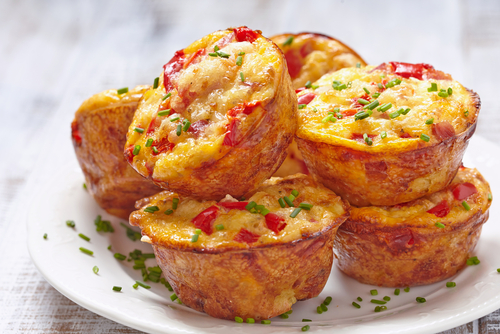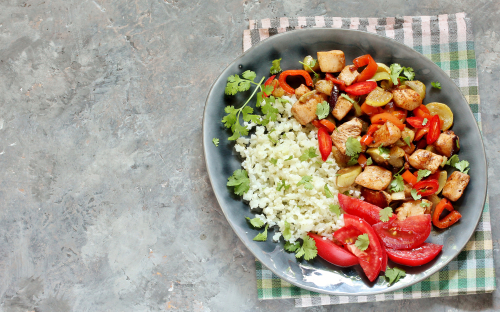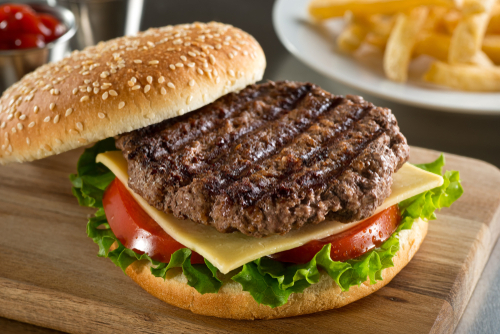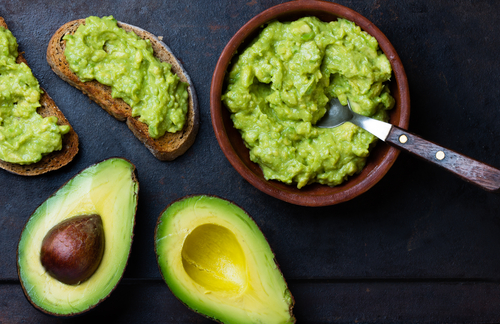On average, a keto diet is made up of 55% to 60% fat, 30% to 35% keto protein powder and 5% to 10% carbs.
The main benefits of doing this diet are losing fat and losing weight. To be able to adhere to a keto diet, nutritionists recommend creating an eating plan. Continue reading to know more about a one-week meal plan for such a diet.
The one-week keto diet eating plan
Keto meal
This is a meal that has fifty grams of overall carbohydrates or contributes around thirty grams of net carbohydrates daily. Using the keto diet calculator, net carbohydrates are overall carbohydrates minus fiber.
Fiber is there in plants and it is crucial to add it in your keto diet since it helps in protecting gut bacteria, it prevents constipation and it even enhances digestion.
In a keto diet, most calories are obtained from fats and fewer amounts are acquired from proteins. Eggs, meat, fish, and dairy are the ones that appear most in a keto diet.
Once the body is unable to depend on carbs to get energy, it burns fat to get fuel. This causes the building up of acids known as ketones resulting in a ketosis state.
As per a certain study, the keto diet can lower fat mass, the size of the waist, and fasting levels of insulin.
Other studies also proved that keto diet one-week results include reducing a few of the main risk factors of high blood pressure, heart disease, less-density lipoprotein cholesterol, and triglycerides.
Very few people are able to adhere to the keto diet guidelines throughout. Most will do stick it for a short time and will start altering it by including carbs and minimizing fats.
An example of a meal plan for a keto diet for a week:
In the example below, you can tailor the specified meals and snacks to your liking on every typical keto diet day. You only have to be very careful in order to avoid exceeding fifty grams of overall carbs consumed on keto diet day by day.
Monday:
Breakfast: Egg muffins accompanied by spinach, cheese, and tomatoes.
Lunch: Cauliflower soup and bacon or tofu cubes.
Supper Garlic and herb buttered shrimp with zucchini noodles.
Snacks: Cucumber, cheese roll-ups, roast turkey, celery sticks, and pepper with guacamole.
Tuesday: Reduce fiber on this day
Breakfast: Scrambled eggs and greens with pumpkin seeds.
Lunch: Chicken mayonnaise salad, cucumber, avocado, tomato, onion, and almond.
Supper: Beef stew that contains mushrooms, herbs, onions, celery, and beef broth.
Snacks: Smoothie with almond milk, chia seeds, spinach, and nut butter.
Wednesday
Breakfast: Omelet, mushrooms, peppers, and broccoli.
Lunch: egg salad, avocado, onion, and spices.
Supper: Chicken, cauliflower rice and brussels sprout salad.
Snacks: cheese and bell peppers.
Thursday
Breakfast: Smoothie that has almond milk, chia seeds, protein powder, nut butter, and spinach.
Lunch: Avocado salad, shrimp, tomatoes, herbs, lemon juice, olive oil, and feta cheese.
Supper: Garlic butter steak, asparagus, and mushrooms.
Snacks: Boiled egg and flax crackers with cheese.
Friday
Breakfast: Two fried eggs, blackberries and avocado.
Lunch: Grilled salmon, greens salad and tomato.
Supper: Chicken, cauliflower mash and green beans.
Snacks: Kale chips, cheese, and bell peppers.
Saturday
Breakfast: Scrambled eggs, green onions, and tomatoes.
Lunch: Tuna salad, tomatoes, avocado, and macadamia nuts.
Supper: Pork and vegetables.
Snacks: Celery sticks, berries, and nuts.
Sunday
Breakfast: Yogurt and granola.
Lunch: Beef burger, guacamole, kale salad, and tomato.
Supper: Fried chicken, mushrooms, broccoli, peppers with sauce.
Snacks: Sugar-free turkey jerky, one egg and vegetable muffin.
Vegetarian and vegan keto meals
If you are a vegan or a vegetarian, it might be hard to adhere to the keto diet. This is because most calories in those diets are gotten from carbs. Even non-animal protein sources like beans and lentils are many at times very high in carbohydrates.
In the normal keto diet, a big portion of meals constitutes animal products because they contain a lot of fat and protein. They have very little carbs.
As tricky as it can be, there is still a way for vegans and vegetarians to follow a keto diet. If you don’t eat fish or meat, replace it with plant-based foods that have a lot of fat.
Vegetarians may as well eat eggs and dairy products.
Keto diet explained: The foods that can be eaten and those that should be avoided when following a keto diet
- Meat and poultry
What you can eat: Pork, chicken, organ meats, grass-fed beef, and venison.
What you must avoid: Processed meats and breaded meat.
What you can eat occasionally: Low-fat meat like chicken breast and bacon.
- Dairy
What you can eat: Keto diet dairy products like butter, cream, full-fat cheeses, and full-fat yogurt.
What you must avoid: Milk, ice-cream, sweetened yogurt, and nonfat yogurt.
- Fish
What you can eat: Wild salmon, herring and mackerel.
What you must avoid: Breaded fish
- Eggs
What you can eat: Keto diet healthy eggs, both pastured and organic.
- Seeds and nuts
What you can eat: Macadamia nuts, pecans, almonds, chia seeds, flaxseeds, peanuts, pumpkin seeds, walnuts, and unsweetened nut butter.
What you must avoid: Chocolate covered nuts, cashew nuts, and sweetened nut butter.
- Fats and oils
What you can eat: Keto diet foods Avocados, coconut products, fruit and nut oils, such as avocado, coconut, olive, sesame, and olives.
What you must avoid: Margarine, shortening, vegetable oils, including canola and corn oil.
- Vegetables
What you can eat: Asparagus, broccoli, cauliflower, onions, celery, eggplant, leafy greens, mushrooms, tomatoes, peppers, and other non-starchy vegetables.
What you must avoid: Butternut squash, corn, potatoes, sweet potatoes, pumpkin, and other starchy vegetables
- Fruits
What you must avoid: Bananas, citrus fruits, dried fruits, grapes, and pineapple.
What you can eat occasionally: Berries.
- Legumes and beans
What you must avoid: All beans, chickpeas, and lentils.
- Condiments
What you can eat: Herbs and spices, lemon juice, mayonnaise with no added sugar, salt and pepper, vinegar and salad dressings with no added sugar.
What you must avoid: Barbecue sauce, ketchup, maple syrup, salad dressings with added sugar and sweet dipping sauces.
- Grains and grain products
What you must avoid: Baked goods, bread, breakfast cereals, crackers, oats, pasta, rice, and wheat.
- Beverages
What keto diet beverages you should take: Almond or flax milk, bone broth, unsweetened teas and coffees, and water (still or sparkling).
What you must avoid: Beer, fruit juice, soda, sports drinks, sugary alcoholic drinks, and sweetened tea.
What you can eat occasionally: Low carb alcoholic drinks like vodka.
- Others
What you must avoid: Artificial sweeteners, candy, coconut sugar, fast food, processed foods, and sugar.
Tips to help you adhere to a keto diet:
- For keto diet for beginners, start by setting the date.
- Rearrange your pantry and refrigerator, make sure it does not have foods that are high in carbs.
- Prepare a one-week meal plan and follow all keto diet rules. This will help you take a balanced diet, avoid hunger and enjoy benefits of the keto diet
- Analyze product labels thoroughly and check their ingredients and carbohydrates composition.
- If you get hungry often, consider eating small portions of keto diet food 5 to 4 times a day instead of eating large portions three times.
- Keto flu must be avoided in the beginning by taking a lot of fluids and electrolytes.
- Try and fill in all nutritional gaps while adhering to a keto diet.
- It is recommended to minimize physical activities during the first two weeks of doing a keto diet. This is when the body is adjusting to the diet changes.
- If you have any questions or concerns regarding keto diet weight loss per week or anything else, consult a dietitian or a doctor.
Conclusion: Planning your meals when doing a keto diet will help you stick to the right micronutrient ratios, attain fiber goals, and avoid hunger also. We also recommend working with a nutritionist or medic to know how many grams of protein per day on a keto diet you need or any other crucial details. This will prevent you from suffering from nutritional deficiency. If you are planning to start a keto diet, did you find our keto diet 7-day meal plan helpful? Write to us if you have any questions.





































![[Part 2] What’s After Flattening The Curve](https://nt.survivopedia.com/wp-content/uploads/2020/05/2020_05_04_flatten2.jpg)







































It looks very tasty, but calorie
Keto diet has now become very popular and relevant for those who want their figure to be beautiful. It is a low-carb and high-fat diet plan that helps the body eat ketosis.
The excretion of carbohydrates causes the body to start the process of splitting fats, which leads to weight loss.